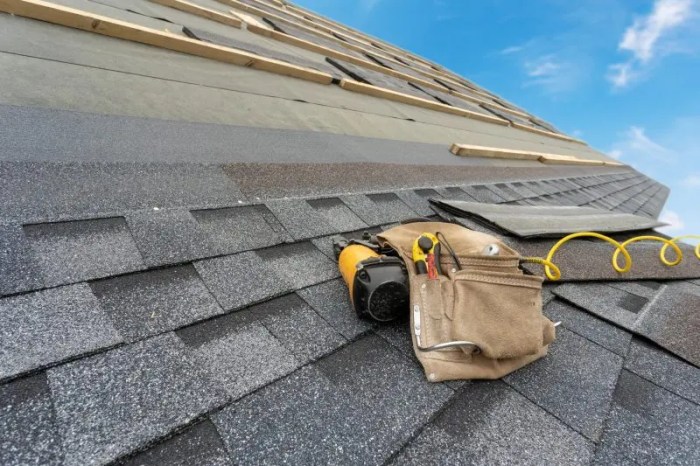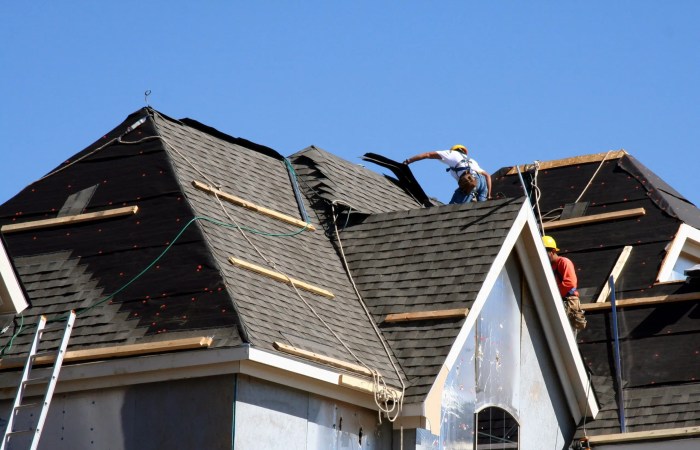Crafting the Perfect Roof: A Comprehensive Guide to Global Roofing & Siding
Global roofing & siding sets the stage for this enthralling narrative, offering readers a glimpse into a story that is rich in detail and brimming with originality from the outset. From the importance of quality materials to the latest trends and sustainable practices, this guide covers it all in a comprehensive and engaging manner.
As we delve deeper into the world of roofing and siding, you'll discover a wealth of information that will empower you to make informed decisions for your construction projects.
Introduction to Global Roofing & Siding

Global Roofing & Siding is a company specializing in providing high-quality roofing and siding solutions for residential and commercial buildings. Quality roofing and siding are crucial components of any building as they serve as the first line of defense against harsh weather conditions, moisture, and other external elements.
Proper installation and maintenance of roofing and siding can significantly improve the durability and energy efficiency of a structure.Global Roofing & Siding plays a vital role in the construction industry by offering a wide range of roofing and siding options, including materials, designs, and installation services.
Their expertise and experience ensure that buildings are well-protected and aesthetically pleasing, enhancing the overall value and functionality of the property.
Types of Roofing Materials

There are various types of roofing materials used globally, each with its own unique characteristics and benefits.
Asphalt Shingles
- Asphalt shingles are the most commonly used roofing material in North America.
- They are affordable and easy to install, making them a popular choice for many homeowners.
- Asphalt shingles come in a variety of colors and styles to suit different architectural designs.
Metal Roofing
- Metal roofing is known for its durability and longevity, lasting up to 50 years or more.
- It is resistant to fire, mildew, insects, and rot, making it a low-maintenance option.
- While metal roofing can be more expensive upfront, it can save money in the long run due to its durability.
Clay Tiles
- Clay tiles are popular in Mediterranean and Spanish-style architecture.
- They are durable and can last for over 100 years with proper maintenance.
- Clay tiles are environmentally friendly as they are made from natural materials and can be recycled.
Wood Shingles
- Wood shingles give a rustic and natural look to a home.
- They are biodegradable and environmentally friendly.
- However, wood shingles require regular maintenance to prevent rot and mold growth.
Siding Options for Buildings
When it comes to siding options for buildings, there are several materials to choose from, each with its own set of benefits and drawbacks. It's essential to consider factors like durability, maintenance requirements, and aesthetic appeal before making a decision.
Vinyl Siding
Vinyl siding is one of the most popular choices due to its affordability and low maintenance requirements. It comes in a variety of colors and styles, making it a versatile option for many homeowners. However, it may not be as durable as other materials and can be prone to cracking or fading over time.
Fiber Cement Siding
Fiber cement siding is a durable option that can mimic the look of wood or stucco without the high maintenance requirements. It is resistant to fire, insects, and rot, making it a long-lasting choice for many homeowners. However, it can be more expensive than vinyl siding and may require professional installation.
Wood Siding
Wood siding offers a natural and timeless look that many homeowners love. It can be painted or stained to match your aesthetic preferences and can last for many years with proper maintenance. However, wood siding is prone to rot, pests, and moisture damage, requiring regular upkeep to maintain its appearance and structural integrity.
Aluminum Siding
Aluminum siding is a lightweight and durable option that resists rust and corrosion. It requires minimal maintenance and is available in a variety of colors. However, aluminum siding can dent easily and may not offer as much insulation as other materials, leading to higher energy costs.
Brick Siding
Brick siding is a classic choice that offers durability and a timeless appeal. It is resistant to fire, pests, and rot, making it a long-lasting option for many homeowners. However, brick siding can be expensive to install and may require additional insulation to improve energy efficiency.
Global Trends in Roofing & Siding
In today's global market, the roofing and siding industry is witnessing several trends that are shaping the way buildings are constructed and renovated. From technological advancements to sustainable practices, here are some key trends to keep an eye on:
Innovations in Roofing and Siding Technology
With the rapid advancement of technology, the roofing and siding industry is experiencing a wave of innovations that are revolutionizing the way structures are protected from the elements. From solar roofing tiles that generate electricity to smart siding materials that regulate temperature, these technological advancements are not only enhancing the functionality of roofs and sidings but also increasing energy efficiency and sustainability.
Sustainable Practices in Roofing and Siding Construction
As the world becomes more environmentally conscious, sustainable practices in roofing and siding construction are gaining momentum. From the use of recycled materials in manufacturing to the installation of green roofs that promote biodiversity and reduce energy consumption, the industry is moving towards more eco-friendly solutions.
Additionally, the adoption of energy-efficient insulation and ventilation systems is becoming increasingly popular, helping to reduce carbon footprint and lower utility costs for building owners.
Importance of Proper Installation
Proper installation of roofing and siding is crucial for ensuring the longevity and effectiveness of these building components. A well-installed roof and siding not only enhance the aesthetic appeal of a property but also provide protection against weather elements and other external factors.
Common Mistakes to Avoid During Installation
- Improper measurements: Accurate measurements are essential to ensure that the roofing and siding materials fit correctly and function as intended.
- Using incorrect materials: Using the wrong materials can lead to premature wear and tear, reducing the lifespan of the roof and siding.
- Poor sealing and fastening: Inadequate sealing and fastening can result in water leaks, drafts, and other structural issues.
- Skipping proper preparation: Skipping essential preparation steps can compromise the integrity of the installation and lead to costly repairs down the line.
Tips for Ensuring Successful Installation
- Choose reputable contractors: Hiring experienced and certified contractors can ensure a professional and high-quality installation.
- Follow manufacturer guidelines: Adhering to the manufacturer's instructions for installation can help prevent common mistakes and ensure proper functioning.
- Regular inspections: Conducting regular inspections and maintenance can help identify issues early on and prevent major problems in the future.
- Invest in quality materials: Using high-quality roofing and siding materials can contribute to a durable and long-lasting installation.
Maintenance and Repairs
Regular maintenance is crucial for ensuring the longevity and durability of roofing and siding. By staying on top of maintenance tasks, homeowners can prevent costly repairs and extend the lifespan of their roofing and siding materials.Common issues that may require repairs in roofing include leaks, missing or damaged shingles, flashing problems, and gutter issues.
For siding, common repair issues include cracks, warping, fading, and moisture damage. It is important to address these issues promptly to prevent further damage to the structure of the building.
DIY Maintenance and Minor Repairs Tips
- Inspect the roof and siding regularly for any signs of damage or wear and tear.
- Clean gutters and downspouts to prevent water buildup and potential leaks.
- Replace missing or damaged shingles or siding panels as soon as possible.
- Seal any cracks or gaps in the siding to prevent moisture infiltration.
- Trim back tree branches that may be touching the roof or siding to prevent damage.
Closing Notes
In conclusion, global roofing & siding play a crucial role in the construction industry, shaping the very foundations of our buildings. By understanding the various materials, trends, and maintenance practices, you can ensure that your roofing and siding stand the test of time.
So, embark on your construction journey with confidence, armed with the knowledge shared in this guide.
FAQ Resource
What are the most common types of roofing materials used globally?
The most common types of roofing materials include asphalt shingles, metal roofing, clay tiles, and wood shakes.
How important is proper installation for roofing and siding?
Proper installation is crucial for the longevity and effectiveness of roofing and siding, ensuring they perform well and withstand the elements.
What are some common issues that require repairs in roofing and siding?
Common issues include leaks, cracks, missing shingles, rotting wood, and warping siding.
What are the benefits of sustainable practices in roofing and siding construction?
Sustainable practices help reduce environmental impact, lower energy costs, and increase the lifespan of roofing and siding materials.